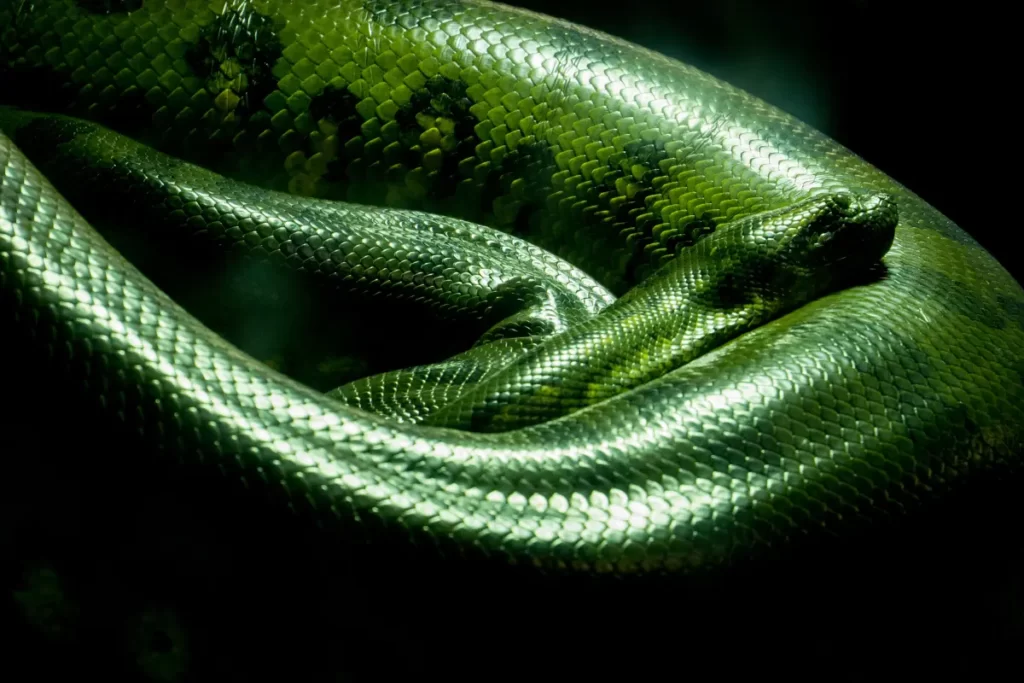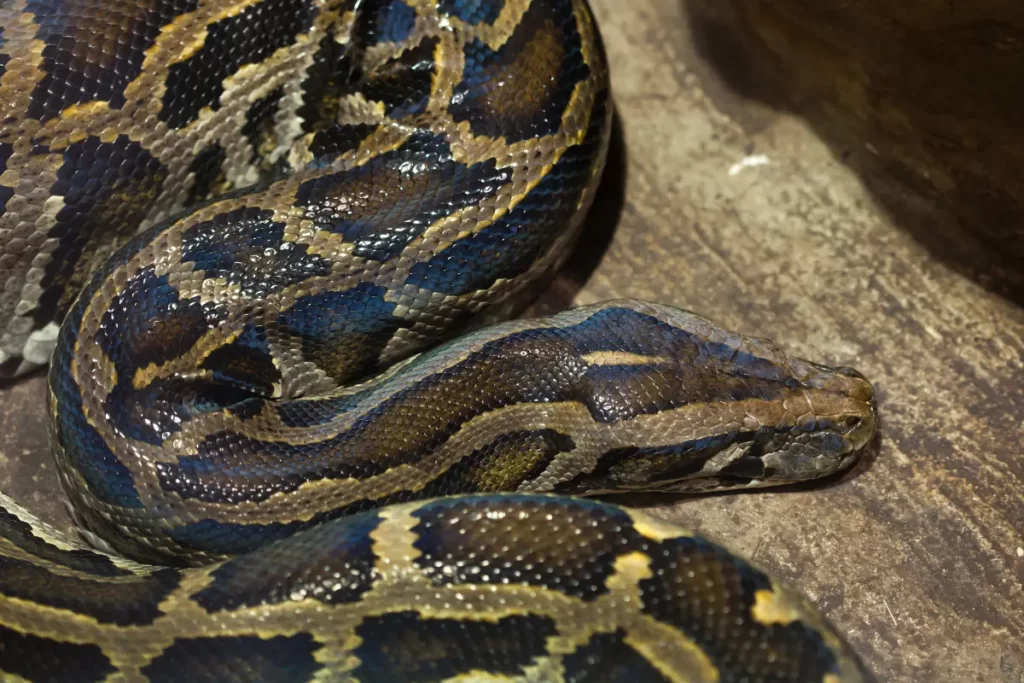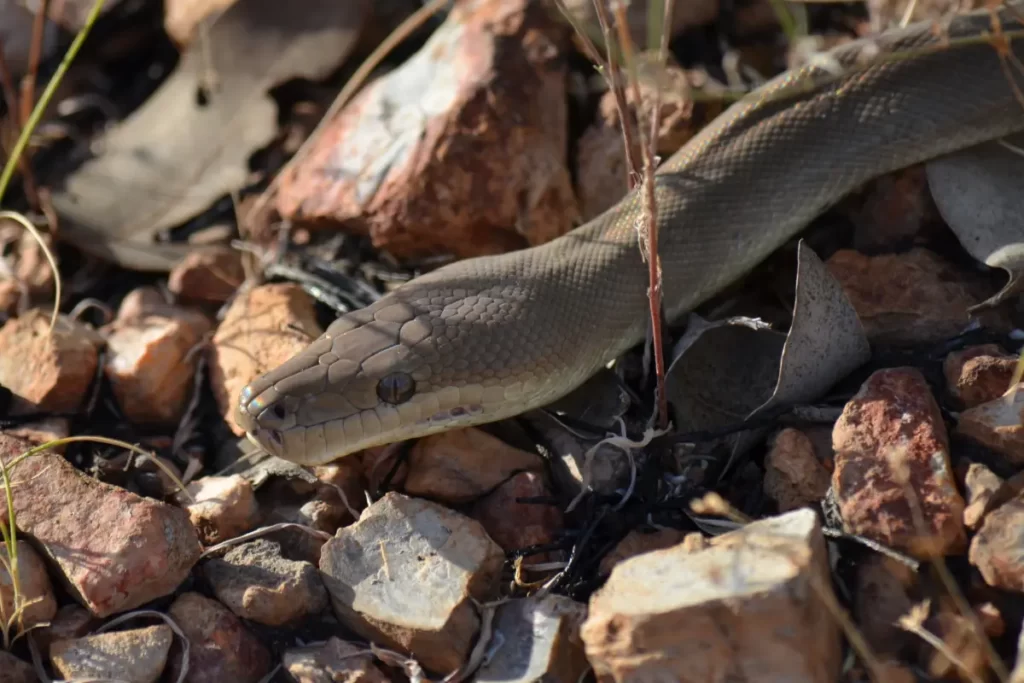Exploring the complex web of the food chain in nature is a fascinating journey that often leads to interesting questions about who eats whom in the wild. Perhaps one of these questions that has caught your attention is, “Do Snakes Eat Ducks?”
Yes, snakes eat ducks. These include larger snakes like pythons and anacondas, which eat a variety of animals, including ducks. However, factors like snake size, duck size, and the snake and duck’s shared habitat heavily determine whether or not a snake will eat a duck.
This article will explain the complex relationship between snakes and ducks, including which snakes prey on ducks. How they catch and eat their victims, and what you can do to keep your own ducks safe from snakes.
The Carnivorous Nature of Snakes
Snakes are among the greatest carnivores. The scientific term “Carnivora” refers to the group of animals that eat mostly meat. Snakes have a remarkable variety of tastes and are not just carnivores.
The size and species of a snake determine the specialization of its diet. Small, insectivorous species may feast on insects and small amphibians. In contrast, larger species, such as pythons and anacondas, can eat rodents, birds, and even mammals like deer, pigs, and antelope.
Snakes have an interesting anatomy that lends itself well to their carnivorous nature. They have powerful jaws because of their sharp, backward-pointing teeth. Their jawbones are joined by elastic ligaments that allow them to swallow prey much larger than their heads.
Also, some species have venom, which is a dangerous mix of enzymes and proteins that can kill, paralyze, or immobilize their prey, making it easier to eat. Constrictors and other animals with similar hunting strategies use their superior strength to kill their prey by imposing deadly pressure. Because of their unique carnivorous nature, snakes are among the most successful predators in the animal kingdom, showing their evolutionary adaptability.
Do Ducks Really Afraid of Snakes

Yes, ducks are afraid of snakes because it is part of their survival habits. Like many other animals, ducks have an innate fear of predators, and that includes snakes, especially in areas where their habitats overlap.
However, ducks are hardly helpless prey. They have a highly developed alarm system inside the flock and a heightened awareness. This allows the flock to quickly return to the water, where ducks have an advantage over snakes.
Mother ducks are extremely protective of their ducklings, even if it means risking their own lives to do so. Some duck breeds have been known to fight snakes directly to keep them away from their nests or areas.
Ultimately, ducks are afraid of snakes but have developed sophisticated tactics to deal with this danger. This shows the complicated game between predators and prey in the animal world.
Do Snakes Actually Eat Ducks?
Yes, snakes do eat ducks, although this depends on several things. Snakes are strong predators because of their refined hunting techniques and flexible diets, and they will eat just about everything if given a chance.
Some pythons, anacondas, boas, and other large snakes, such as ducks, may easily consume large prey. Their ability to stretch their mouths and eat animals bigger than their heads shows how smart they have become.
Most of the time, this predatory interaction happens in places where the habitats of these two species intersect. Wetlands, marshes, and other areas near water frequently include predator-prey interactions. In particular, species of aquatic and semi-aquatic snakes may have a higher chance of preying on ducks because of their superior swimming and diving ability.
It all depends on how big the duck and snake are, though. Only very huge snakes could eat an adult duck, whereas lesser snakes might go after a duckling. So, while it’s not always the case, snakes can eat ducks when the time is right.
What Types Of Snakes Eat Ducks?
The Green Anaconda

The Green Anaconda, one of the world’s most feared predators, is a type of snake like a duck for dinner. This huge snake lives in the murky depths of South America’s rainforests and waterways. Its size and strength are amazing.
They can eat greater prey due to their huge size, exceeding 30 feet in length and 500 pounds in weight. With good eyesight and a great sense of smell, these hidden hunters can capture ducks that pass through their territory without knowing it. Green anacondas eat various animals, with ducks making up a relatively small but important part of their diet.
The Northern Water Snake

Another water snake that often eats ducks is the Northern Water Snake. These snakes can be found across North America. However, they are most at home in the freshwater environments of the continent’s lakes, rivers, and ponds. These quick swimmers can grow to a length of up to 4.5 feet, and they prey on ducklings and other small aquatic fowl.
The Northern Water Snake comes up on its food and strikes quickly to get it. Its powerful constriction can overcome a young duck and eat it whole. Their diet is varied and based on what is available, but a good source of protein and other nutrients are frogs, fish, and tiny birds like ducklings.
The Reticulated Python

The Reticulated Python is the longest snake in the world. It can grow to be over 20 feet long. This snake lives in Southeast Asia, where it lives in woods, grasslands, and rivers. Ducks are a part of this varied diet that also includes mammals and other birds.
The Reticulated Python uses stealth, speed, and strength to strike its prey at the right moment. Its teeth are extremely sharp and curved backward, making it ideally suited for capturing and holding onto prey such as ducks.
The python uses its powerful coils to strangle its prey to death before swallowing it whole. Although ducks are not a regular part of their diet, they are taken advantage of when available to increase the variety of food sources available to this predator.
The Cottonmouth Snake

Cottonmouth, or Water Moccasin, is a semi-aquatic snake that lives in the southeastern United States. It lives in various bodies of water, such as marshes, swamps, and the edges of lakes, making it a possible predator of birds like ducks. The cottonmouth’s venomous bite serves two purposes: defense and hunting.
Adult cottonmouths can grow to be as long as 6 feet. They like to eat fish, amphibians, and other tiny animals or birds, such as ducklings, although they will take advantage of any opportunity to eat one. When they attack quickly and out of the blue, the young ducks don’t have much time to get away, so these poisonous hunts can eat them.
The Diamond Python

The Diamond Python is a species of python native to Australia. It is named for its unique diamond-patterned skin. The wetlands and river systems home to ducks are only two of the many habitats frequented by these nonvenomous constrictors. These pythons can grow to a length of 13 feet, making them powerful predators able to hunt down enormous prey.
Their primary prey is mammals, but they sometimes occasionally eat ducks and other birds. The Diamond Python hunts by moving up on its prey. It hides among the plants and waits until the right moment to strike, which is very fast. Once it has the duck in its grip, it quickly uses its powerful coils to squeeze its food until it is too small to swallow.
The Burmese Python

The Burmese Python is a huge snake native to Southeast Asia that can reach a length of up to 23 feet. The diet of these giant snakes includes a variety of animals and birds, including ducks. Even though water birds aren’t their main food. Burmese Pythons have been known to eat them when they can, especially in the Florida Everglades, where they are a pest.
They hide and wait for their prey to come to them before attacking them by surprise. With a quick strike and a strong, tight grip, they easily overcome their prey. Once the fight is over, the Burmese Python swallows its prey whole, showing that it is a highly adaptable top hunter.
The Indigo Eastern Snake

The Eastern Indigo Snake breaks the record for the longest snake in the United States. These strong snakes can grow up to 8.5 feet long and are known for their glossy, dark blue-black sheen. Their varied diet consists mostly of rodents and other small mammals, including birds.
Eastern indigos will sometimes prey on young ducks if given the chance. They use a fast, direct strike to knock out their target, and then swallow the entire thing. Although ducks aren’t usually on their prey list, they can provide a healthy alternative when resources are low.
The Olive Python

The Olive Python can grow up to 13 feet long, making it one of Australia’s longest snakes. It likes to live in rocky places and along waterways, where it might eat ducks and other water birds.
This python is an opportunistic feeder that has been observed eating animals, ducks, and other birds. Olive Pythons usually wait in ambush and attack their food quickly. After killing their prey by suffocation, they eat them whole.
The King Cobra

The King Cobra, which lives in India and Southeast Asia, is the world’s biggest poisonous snake, reaching a maximum length of 18 feet. It eats mostly other snakes but has also been observed eating small mammals and birds. As such, it can hunt ducks, especially young ducks or otherwise vulnerable species.
The King Cobra uses its poison not just for self-defense, but also to stop its food from moving. With a quick bite that delivers a strong dose of neurotoxic venom, the prey is paralyzed quickly and then eaten whole. Even though ducks aren’t usually a big part of its food, the King Cobra will eat them if it has the chance.
How Do Snakes Capture and Consume Ducks?
- Identifying the Prey: First, the snake identifies its potential prey, in this case, a duck. They do this through heat-sensing pits (in the case of pythons and vipers), keen eyesight, or by picking up chemical signals with their tongues.
- Stalk and Ambush: Snakes are cunning hunters, often resorting to stalking or ambush tactics. They might slither silently through the water or lie motionless among the vegetation, camouflaging themselves within the environment until the unsuspecting duck ventures too close.
- Quick Strike: The snake launches a rapid strike once the prey is within reach. Constrictors wrap their coils around the duck, exerting pressure that stops the duck’s heart. At the same time, venomous snakes inject a quick-acting toxin with their fangs.
- Swallowing Whole: Snakes consume their prey whole, starting from the head, once the prey is subdued. The highly flexible jaws of the snake dislocate, allowing them to swallow prey much larger than their heads.
- Digestion: Snakes retreat to a safe, hidden location after ingesting the duck. They can take several days to digest their meal, powered by potent stomach acids that break down everything but the toughest feathers.
- Rest and Repeat: Post-digestion, snakes enter a resting phase, recharging their energy reserves before setting out on the next hunt. The frequency of such feeding cycles largely depends on the prey’s size and the snake’s species.
Can I Use Snake Repellent While Ducks On Form?
You can use snake repellents to keep your ducks safe on the farm. Using these snake deterrents can make it safer for your ducks, especially in areas where snakes are common.
As snakes have such sensitive olfactory receptors, snake repellents often contain compounds like naphthalene or sulfur, known for repelling snakes. However, their effectiveness varies widely and may not be useful against all snake species.
If you keep a wide variety of animals on your farm, you must use repellents that won’t harm other species. Animals may be harmed or irritated by some chemical repellents. Natural or organic repellents may be preferable because they don’t include any harmful chemicals but instead use components like clove oil or cinnamon that snakes find unpleasant but won’t harm.
Repellents should be part of your farm’s larger snake management plan, not a substitute for it. Keeping the area around the ducks clean and free of clutter can prevent snakes from utilizing it as a hiding place, as will blocking off any potential access holes. You can protect your ducks against snakes more effectively if you use both of these methods together.
How to Protect Your Ducks From Snakes?
- Secure Housing: Provide a safe, snake-proof shelter for your ducks, particularly at night when they’re most vulnerable. This means well-constructed coops with small gaps and openings securely sealed to prevent the entry of snakes.
- Regular Inspection: Inspect your duck’s habitat for signs of snake activity. Look out for shed snake skins, unusual tracks, or unexplained disappearance of eggs or ducklings.
- Maintain a Clean Environment: Keeping the area around the coop clean and free of debris reduces hiding spots for snakes, making the area less appealing to these elusive creatures.
- Use of Repellents: Employ snake repellents around your property. These can be chemical, natural, or even electronic, producing vibrations that snakes dislike. Always ensure the chosen repellent is safe for your ducks and other animals.
- Predator Guards: Install predator guards or fencing around the coop. These barriers can deter snakes from entering the duck’s living areas.
- Natural Predators: Encouraging the presence of natural snake predators, like certain bird species, can help keep snake populations in check.
- Professional Help: Consider engaging with professional pest control services specializing in humane snake removal and prevention in areas with high snake populations.
Remember, the key to protecting your ducks is through a multi-faceted approach that includes preventive measures, regular inspections, and immediate response to any signs of snakes.
Conclusion
In conclusion, it is clear that the natural world is dependent on a fine equilibrium.In which highly odd predator-prey relationships, such as the one between snakes and ducks, play an important role. Not every type of snake eats ducks, but the bigger ones, especially those that share habitats, are perfectly capable of doing it.
Ducks have to deal with these risks because they could be eaten, and as their caretakers, we have to do our best to keep them safe. The circle of life goes on, and it’s better because of these interesting interactions. After all, knowing these complicated interactions shows how beautiful, diverse, and durable our natural world is.

